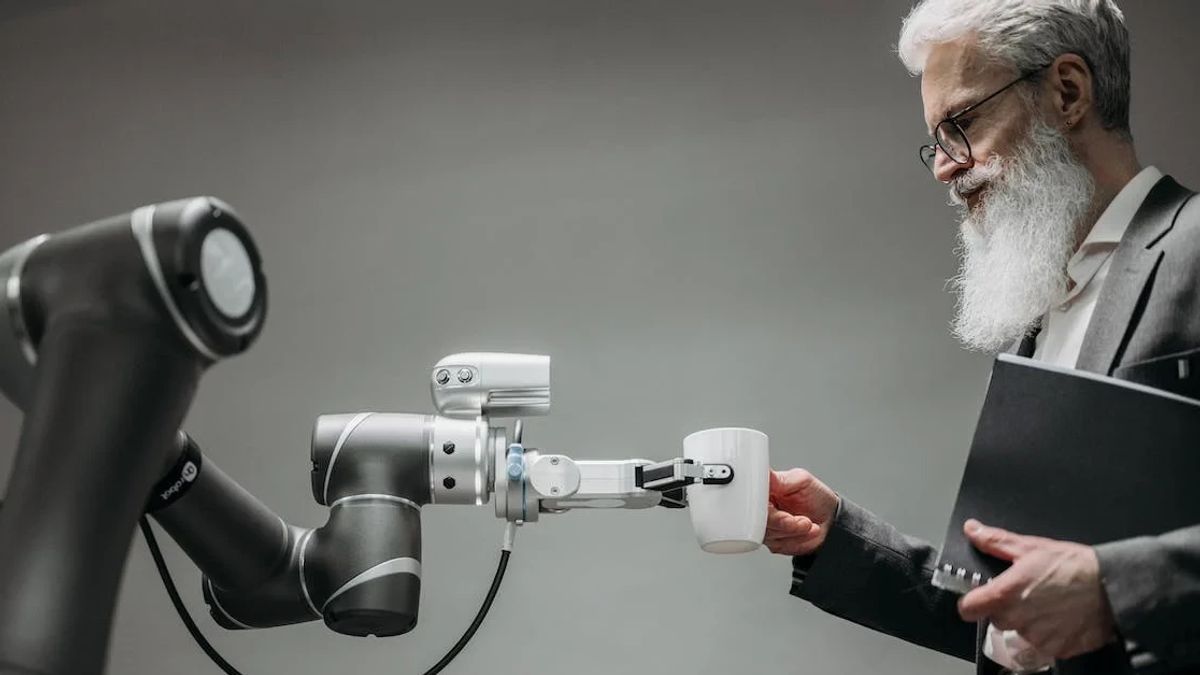S&D Blech, the manufacturer of engine components, plans to replace the head of an annealing unit that retired with a robot. This is a response to the increasingly severe labor shortage in Germany, caused by the retirement of the generation of "baby boomers" from work.
Official data shows that in June, around 1.7 million jobs in Germany were not filled. Germany's Chamber of Commerce and Industry (DIHK) said that more than half of companies had difficulty filling vacancies, where estimates cost the country with the largest economic growth in Europe nearly reached 100 billion euros (Rp1.7 quadrillion) per year.
Director Manager of Henning Schloeder cited this trend as the reason S&D Blech has switched to automation and digitization over the past few years, saying. "This will exacerbate the already difficult skilled workforce situation, especially in production and crafts," Schloeder said.
"Finding a new head of the milling unit is difficult, not only because of his experience, but also because of a very tough job no one wants to do it again," said Schloeder.
Machine milling work involves high heat, continuous noise, and dangerous sparks.
The increase in women's participation in the labor market and the surge in immigration have helped balance demographic changes in recent years in Germany.
However, as the baby boomers retire and the younger age group - which is less due to their low birth rate - joins the labor market, the German Federal Labor Agency estimates the number of workers will shrink by 7 million people by 2035.
According to Nela Richardson, the main economist of ADP, stated similar changes also affect other developed economies, and the impact of advanced automation technologies ranging from robots to artificial intelligence will be widely felt.
"In the long term, all those innovations will change the way the world works. Everyone will do their job in a different way," he told Reuters.
A major investment in automation by automakers and other major industrial companies means Germany is already the fourth largest robot market in the world and the largest in Europe.
However, along with increasingly affordable and easier-to-operated robot prices, the Mittelstand company that is often managed by families and is the backbone of the country's economy also uses it, ranging from manufacturers such as S&D Blech to bakeries, laundry, and supermarkets.
SEE ALSO:
According to the International Robotic Federation, about 26,000 units were installed in Germany last year. This figure was only exceeded in 2018, before the COVID-19 pandemic, which slowed annual growth by 4% on average.
"Robots allow the survival of companies that see their future threatened with labor shortages," said Ralf Winkelmann, director of Germany's FANUC manager, who sold about half of Japanese-made robots to small and medium-sized companies.
Ralf Hartdegen, the consultant who guides the company in this kind of transition, said companies that want to automate but are reluctant to lay off workers are increasingly making their plans based on worker reductions through retirement.
ROLEC, which is led by families and manufactures industrial electronic protection systems and control equipment, purchased its first robot last year. This is to allow production to continue at night. The company has purchased a second machine and plans to continue investing in automation.
"It feels great when you turn on the lights in the morning and the components are already in the storage container and have been processed," CEO Matthias Rose told Reuters.
The increase in automation also reflects the fact that robots have become easier to use, without the need for programming skills. "Most robots are now equipped with Human Machine Interfaces, touchscreens similar to smartphones," said Florian Andre, co-founder of SHERPA Robotics, a startup focused on companies with an employee count of between 20 and 100 people.
Even workers and unions, who used to be afraid of losing their jobs, now have an increasingly positive view. A survey published by the automatics robot market in June found that nearly half of German workers saw robots help in overcoming labor shortages.
Rose of ROLEC said that automation recognition in 2022 appears when there is a large pile of orders, so workers have to work overtime and on Saturday. "The initial situation is good for our first robot, as it is seen as a tool rather than a competitor," he added.
German IG union spokesman Metall said the robot adopted as part of a long-term corporate strategy, rather than to quickly reduce costs, could help make work "healthier, more attractive, and safer."
The truck and bus maker Daimler Truck also uses robotics extensively. Especially to help with the transfer of heavy goods and the challenges of workers' physical health.
"However, nothing is more flexible than humans," said Matthias Krust, head of the company's board. "The more the production complex, the more diverse, the more difficult it is to use robots."
The English, Chinese, Japanese, Arabic, and French versions are automatically generated by the AI. So there may still be inaccuracies in translating, please always see Indonesian as our main language. (system supported by DigitalSiber.id)


















